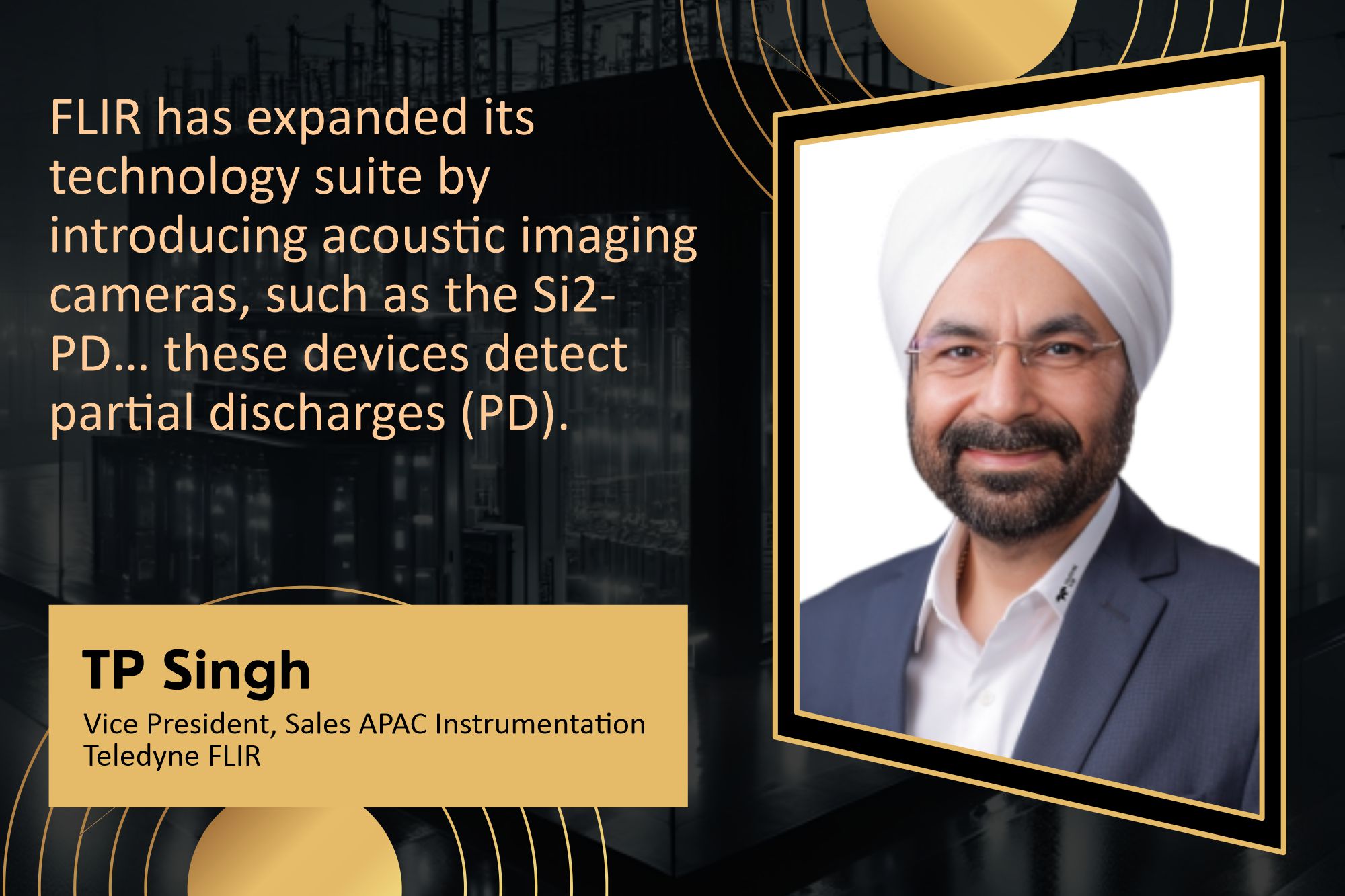Cutting-edge thermal imaging cameras help in real-time substation condition monitoring
By Staff Report April 25, 2025 5:56 pm IST
By Staff Report April 25, 2025 5:56 pm IST

Compact, battery-powered thermal cameras by FLIR, like the T1020, and T865, equipped with a built-in display and sensor, allow inspectors to conduct temperature analysis efficiently across a range of substations, including digital, conventional and gas-insulated types.
When an inspection engineer walks into a substation, identifying faults visually is almost impossible. However, a thermal camera without any physical contact or shutdown detects these infrared emissions and converts them into a visual temperature image. This ultimately helps to detect faults, so preventive measures are taken to avoid glitches. TP Singh from FLIR shares further insights into the Testing and Measurement sector and the company’s role in revolutionising the industry in an exclusive interview with EPR.
How does a thermal imaging camera help in enhancing predictive maintenance and operations?
Thermal imaging cameras operate on the principle of infrared technology, enabling us to ‘see the unseen’ and predict potential faults before they happen. Unlike the human eye, which relies on visible light and reflections to see, like a white shirt only appearing white when there is light, thermal cameras detect infrared radiation emitted by any object above absolute zero (-273°C or 0 Kelvin). This makes them invaluable in power substations where thousands of connectors continuously emit heat due to electrical load.
When an inspection engineer walks into a substation, identifying faults visually is almost impossible. However, a thermal camera without any physical contact or shutdown detects these infrared emissions and converts them into a visual temperature image. Built-in algorithms can measure temperatures with high accuracy up to 0.1°C. This allows engineers to instantly identify overheating components or loose connections that may go unnoticed. This small handheld device becomes a powerful tool in predictive maintenance, allowing engineers to inspect transformers, wave traps and other substation equipment efficiently and safely.
How does FLIR’s thermal imaging technology help validate the reliability of substation in real-world operating conditions?
Thermal imaging technology by FLIR plays a critical role in validating the reliability of substations under real-world operating conditions by enabling safe, non-contact temperature measurements of electrical components. These compact, battery-powered thermal cameras—like the T1020, and T865 are designed for portability and ease of use. Equipped with a built-in display and sensor, this equipment allows inspectors to conduct temperature analysis efficiently across a range of substations, including digital, conventional and gas-insulated types. The cameras can also be connected to mobile devices, enabling near real-time image sharing with the cloud. This allows remote condition monitoring; for instance, a manager in Mumbai can review inspection images from a substation in Nagpur almost instantly uploaded on web.Moreover, FLIR has expanded its technology suite by introducing acoustic imaging cameras, such as the Si2-PD, which were developed after acquiring a Finnish company. These devices detect partial discharges (PD), a common issue not visible in the infrared spectrum. Using 128 integrated microphones, the Si2-PD localises PD visually enhancing fault detection without requiring shutdowns. Together, thermal and acoustic imaging offers a powerful, comprehensive solution for substation health diagnostics, ensuring higher reliability and faster maintenance response.
How can temperature diagnostics and route mapping improve equipment maintenance and decision-making efficiency?
Our product serves as a diagnostic tool to assess the temperature condition of electrical equipment, much like a stethoscope for doctors. Ideally, inspections are conducted monthly, though critical equipment may require bi-weekly checks. Utilities typically track temperature trends and reassess after rectifying issues. While AI is being integrated, predicting equipment lifespan through temperature data is still challenging. The decision-making remains with field experts. Our latest feature, a route locator, allows users to map inspection routes and compare data over time, enhancing operational insight through automated comparisons, AI support, and cloud storage, which helps technicians make clearer, data-driven decisions.
We use cookies to personalize your experience. By continuing to visit this website you agree to our Terms & Conditions, Privacy Policy and Cookie Policy.